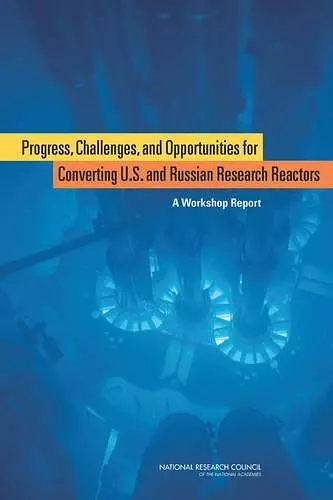Progress, Challenges, and Opportunities for Converting U.S. and Russian Research Reactors
A Workshop Report
National Research Council author Division on Earth and Life Studies author Russian Academy of Sciences author Nuclear and Radiation Studies Board author Russian Committee on Progress, Challenges, and Opportunities for Converting US and Russian Research Reactors from Highly Enriched to Low Enriched Uranium Fuel author US Committee on Progress, Challenges, and Opportunities for Converting US and Russian Research Reactors from Highly Enriched to Low Enriched Uranium Fuel author
Format:Paperback
Publisher:National Academies Press
Published:24th Mar '12
Currently unavailable, and unfortunately no date known when it will be back

Highly enriched uranium (HEU) is used for two major civilian purposes: as fuel for research reactors and as targets for medical isotope production. This material can be dangerous in the wrong hands. Stolen or diverted HEU can be used-in conjunction with some knowledge of physics-to build nuclear explosive devices. Thus, the continued civilian use of HEU is of concern particularly because this material may not be uniformly well-protected. To address these concerns, the National Research Council (NRC) of the U.S. National Academies and the Russian Academy of Sciences (RAS) held a joint symposium on June 8-10, 2011.
Progress, Challenges, and Opportunities for Converting U.S. and Russian Research Reactors summarizes the proceedings of this joint symposium. This report addresses: (1) recent progress on conversion of research reactors, with a focus on U.S.- and R.F.-origin reactors; (2) lessons learned for overcoming conversion challenges, increasing the effectiveness of research reactor use, and enabling new reactor missions; (3) future research reactor conversion plans, challenges, and opportunities; and (4) actions that could be taken by U.S. and Russian organizations to promote conversion. The agenda for the symposium is provided in Appendix A, biographical sketches of the committee members are provided in Appendix B, and the report concludes with the statement of task in Appendix C.
- Front Matter
- Overview
- 1 Introduction and Background
- 2 Challenges and Opportunities Associated with Conversion
- 3 Reactor Conversion Case Studies
- 4 Managing Proliferation Risks and Maintaining Missions
- Appendix A: Symposium Agenda
- Appendix B: Committee and Staff Biographical Sketches
- Appendix C: Statement of Task <
ISBN: 9780309253208
Dimensions: unknown
Weight: unknown
126 pages